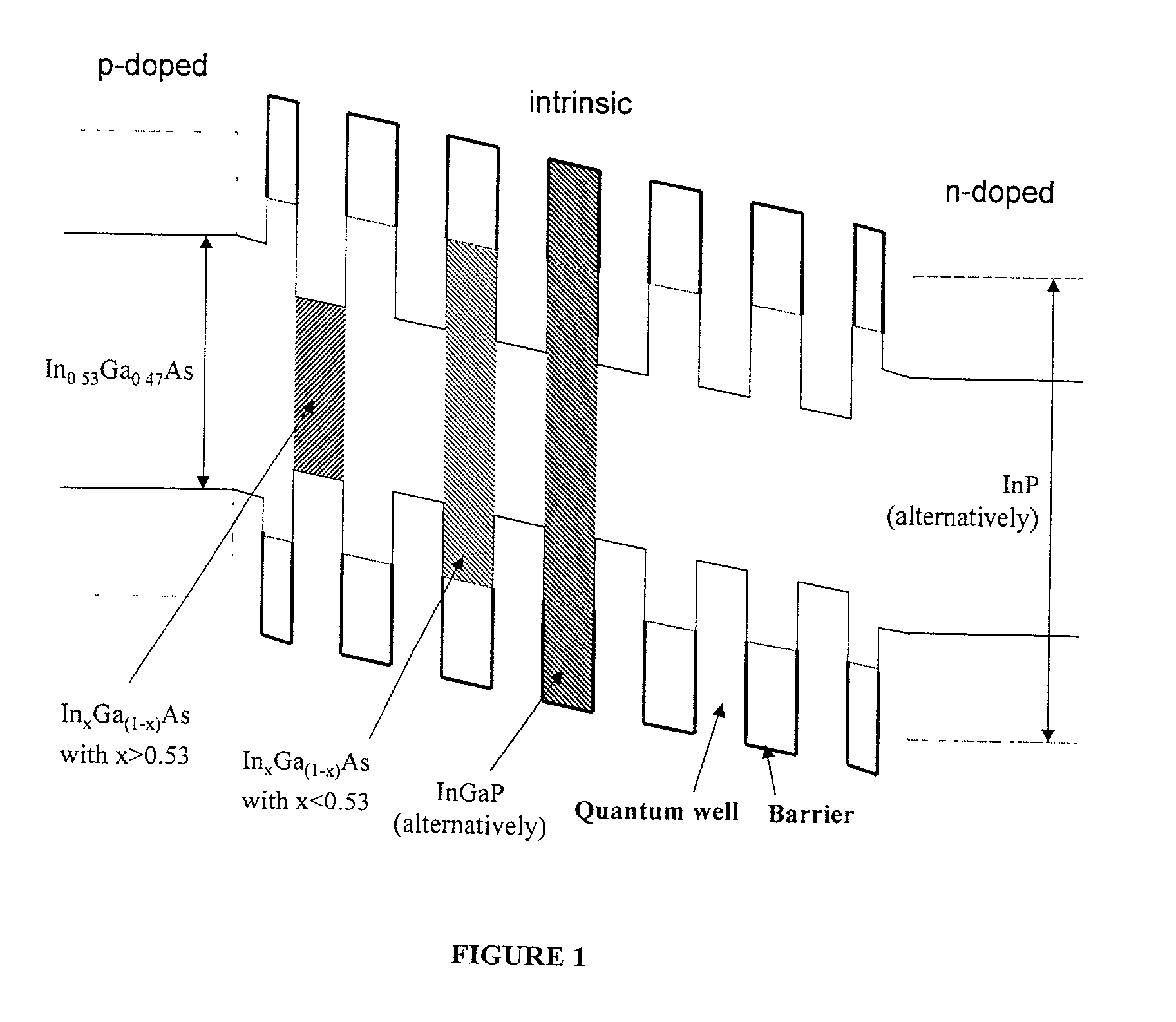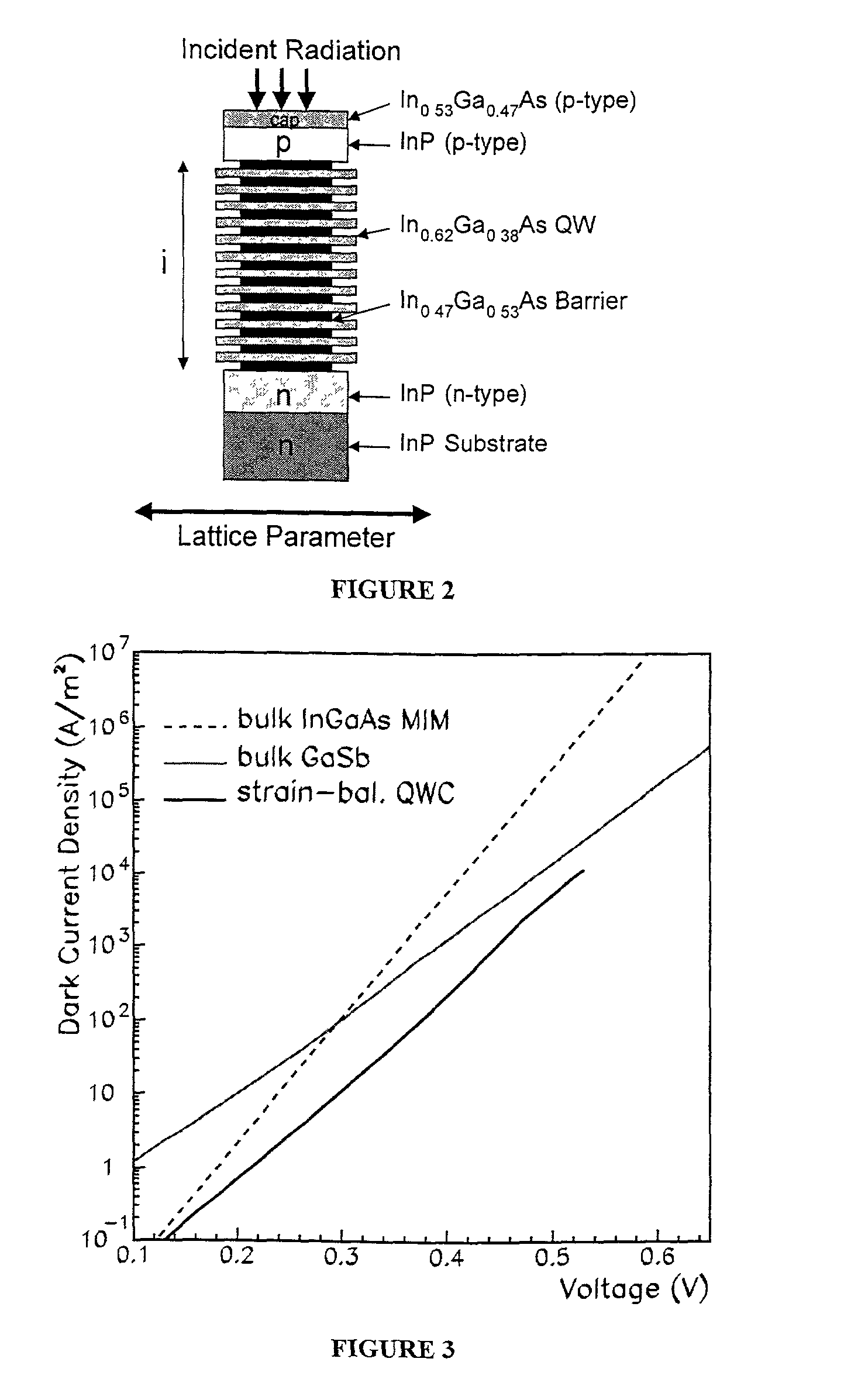Photovoltaic device
a photovoltaic device and photovoltaic cell technology, applied in the field of photovoltaic devices/cells, can solve the problems of increasing non-radiative recombination, reducing the efficiency of photovoltaic generation,
- Summary
- Abstract
- Description
- Claims
- Application Information
AI Technical Summary
Benefits of technology
Problems solved by technology
Method used
Image
Examples
Embodiment Construction
[0025] As an example for a strain-compensated QWC, we consider a 30 well In.sub.0.62Ga.sub.0.38As / In.sub.0.47Ga.sub.0.53As (InP) QWC, grown by MOVPE, whose sample description is given in Table I.
1TABLE I Sample description of a strain-compensated quantum well cell. Conc. Layers Thickness (.ANG.) Material Function Doping (cm.sup.-3) 1 1000 In.sub.0.53Ga.sub.0.47As Cap p 1E + 19 1 7000 InP Emitter p 2E + 18 30 120 In.sub.0.45Ga.sub.0.55As Barrier i 30 120 In.sub.0.62Ga.sub.0.38As Well i 1 120 In.sub.0.47Ga.sub.0.53As Barrier i 1 5000 InP Base n 1E + 18 InP Substrate n
[0026] In FIG. 2 the strain-balancing conditions of one example are shown, where the average lattice-constant of wells and barriers is roughly the same as the InP substrate. FIG. 1 shows a schematic diagram of the energy band-gaps of this kind of structure. This specific sample was not designed for TPV applications; the p-region, for example, is far too thick. It does not quite fulfil the ideal strain-balanced conditions,...
PUM
 Login to View More
Login to View More Abstract
Description
Claims
Application Information
 Login to View More
Login to View More - R&D
- Intellectual Property
- Life Sciences
- Materials
- Tech Scout
- Unparalleled Data Quality
- Higher Quality Content
- 60% Fewer Hallucinations
Browse by: Latest US Patents, China's latest patents, Technical Efficacy Thesaurus, Application Domain, Technology Topic, Popular Technical Reports.
© 2025 PatSnap. All rights reserved.Legal|Privacy policy|Modern Slavery Act Transparency Statement|Sitemap|About US| Contact US: help@patsnap.com



